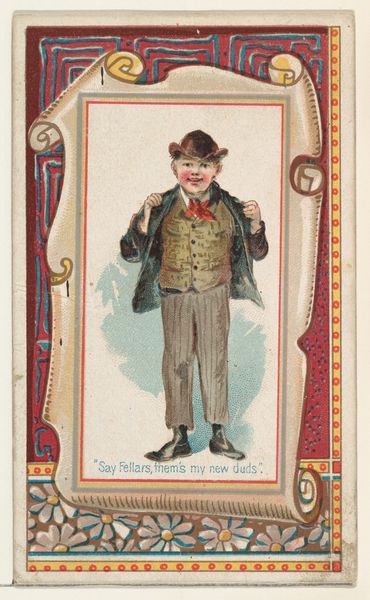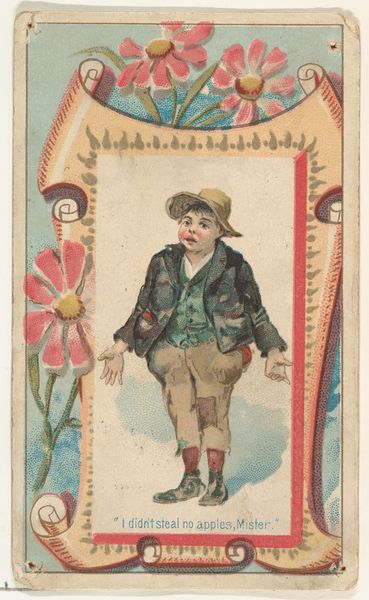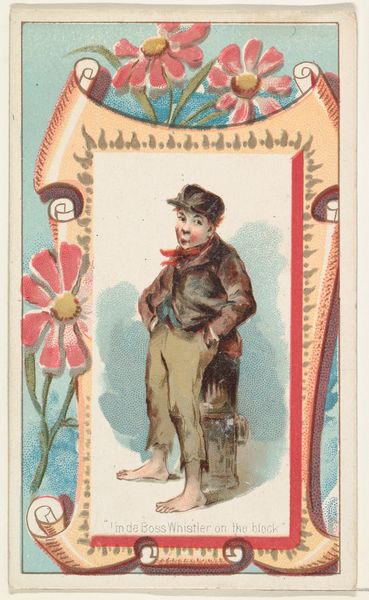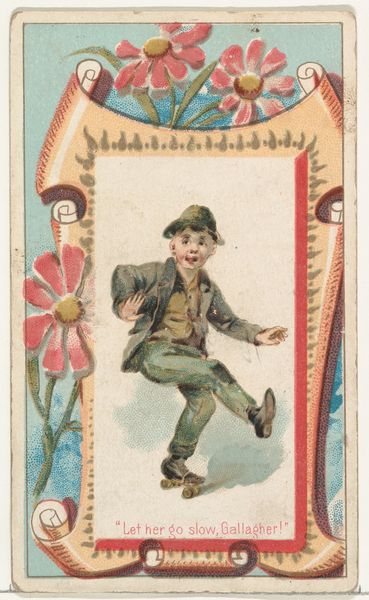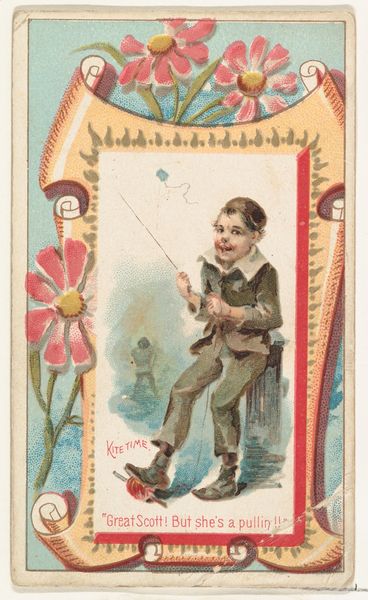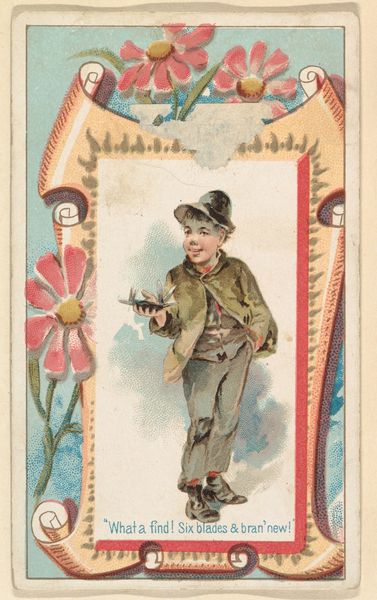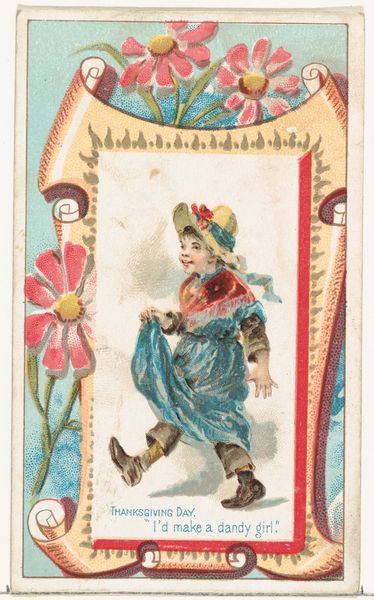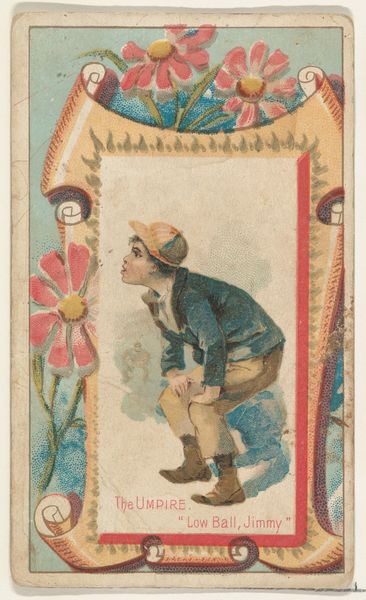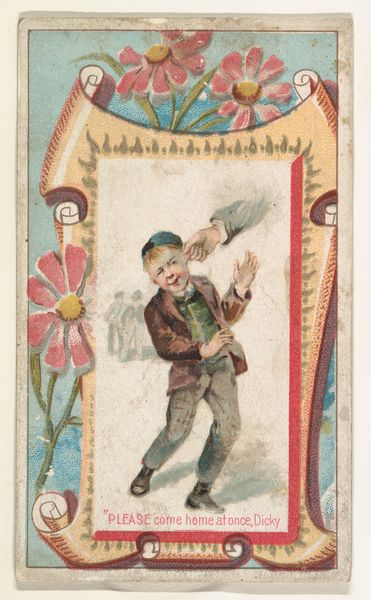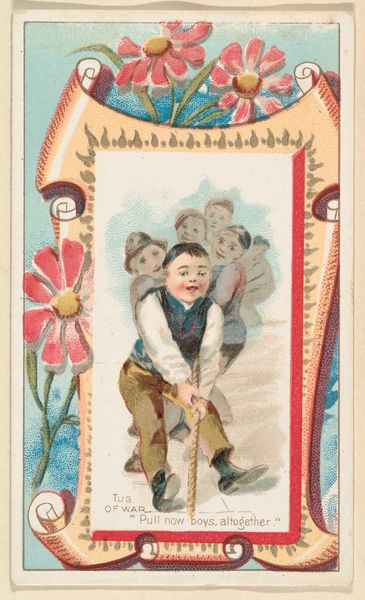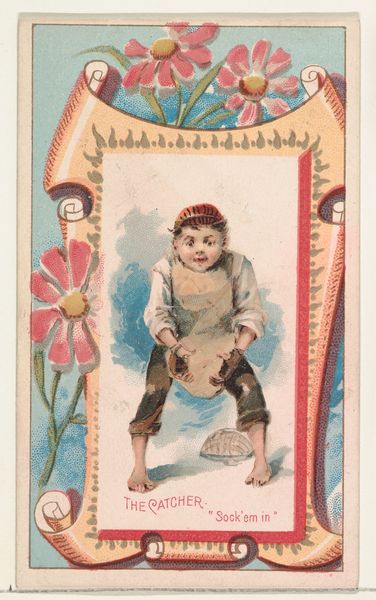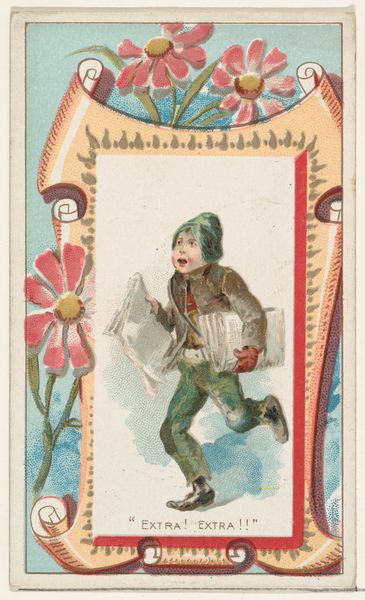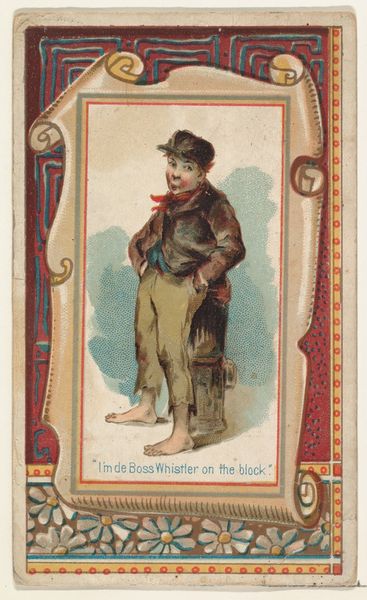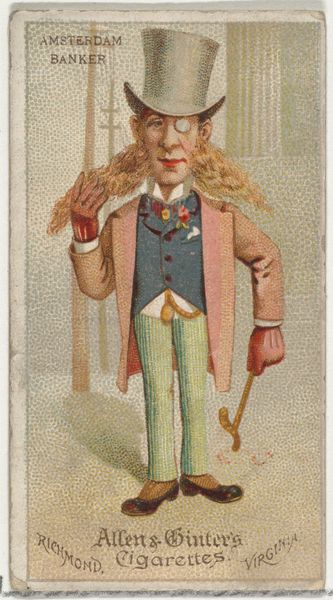
"Say Fellars, them's my new duds," from the Terrors of America set (N136) issued by Duke Sons & Co. to promote Honest Long Cut Tobacco 1888 - 1889
0:00
0:00
Dimensions: Sheet: 2 3/4 x 1 1/2 in. (7 x 3.8 cm)
Copyright: Public Domain
Curator: I'm struck by the composition, a riot of colour, and the use of a formal floral frame around a young, almost Dickensian boy presenting himself. Editor: Absolutely! We're looking at one of the cards from the “Terrors of America” series (N136), made by W. Duke, Sons & Co. around 1888-89 to advertise Honest Long Cut Tobacco. It's currently held at The Met. This one is titled ""Say Fellars, them's my new duds,"" and what grabs my attention is how this seemingly innocent image reflects the social tensions of the era. Curator: You're drawing on external sources. Fair enough! But look at the color choices— the soft blues of the sky against the stark browns and reds. See how they pull the eye towards the center, highlighting this central figure with the bravado the title describes? It is not necessarily what it seems! Editor: Indeed. It's crucial to remember these cards circulated widely in a period of significant immigration and rapid industrialization, in a rapidly changing country. Advertising like this helped solidify an "American" identity, and also an aspiration to upper middle class respectability, which was not shared equitably across gender and race. What appears as simple, even endearing, self-promotion, functions in many ways like propaganda. The cute urchin reinforces the notion that anyone can, through personal appeal and charm, be American. Curator: Charm that is largely visual; the artful application of coloured pencil which achieves in itself, the transformation suggested! I want to get lost in the way the lines create form. The rendering has depth in the tailoring of his jacket, vest and hat; how the texture almost bursts free from its flat surface! Editor: And that supposed burst comes at a cost. This “American Dream” conveniently ignores the harsh realities of poverty, class division and lack of opportunities facing many at the time, particularly immigrant children working long hours, often in brutal conditions. How are the themes of class mobility constructed and how are those from less powerful socioeconomic status represented or, more often than not, under-represented? It also says something about child labor if its audience is to assume that little tykes had new outfits like this very often! Curator: So, while the details seduce our visual system through color and pattern, the semiotics bring forth these complicated undercurrents? Editor: Exactly. This “innocent” portrait performs some interesting social and economic contortions! It can provide a powerful tool for decoding some hidden social structures of the past. Curator: Yes, by recognizing these intersectional themes we can definitely challenge our notions, as observers. The work shows us more about then...and about now, too! Editor: It’s always worth reminding ourselves how artworks are very often embedded in complex cultural, social, and political webs that demand deeper inquiry.
Comments
No comments
Be the first to comment and join the conversation on the ultimate creative platform.
